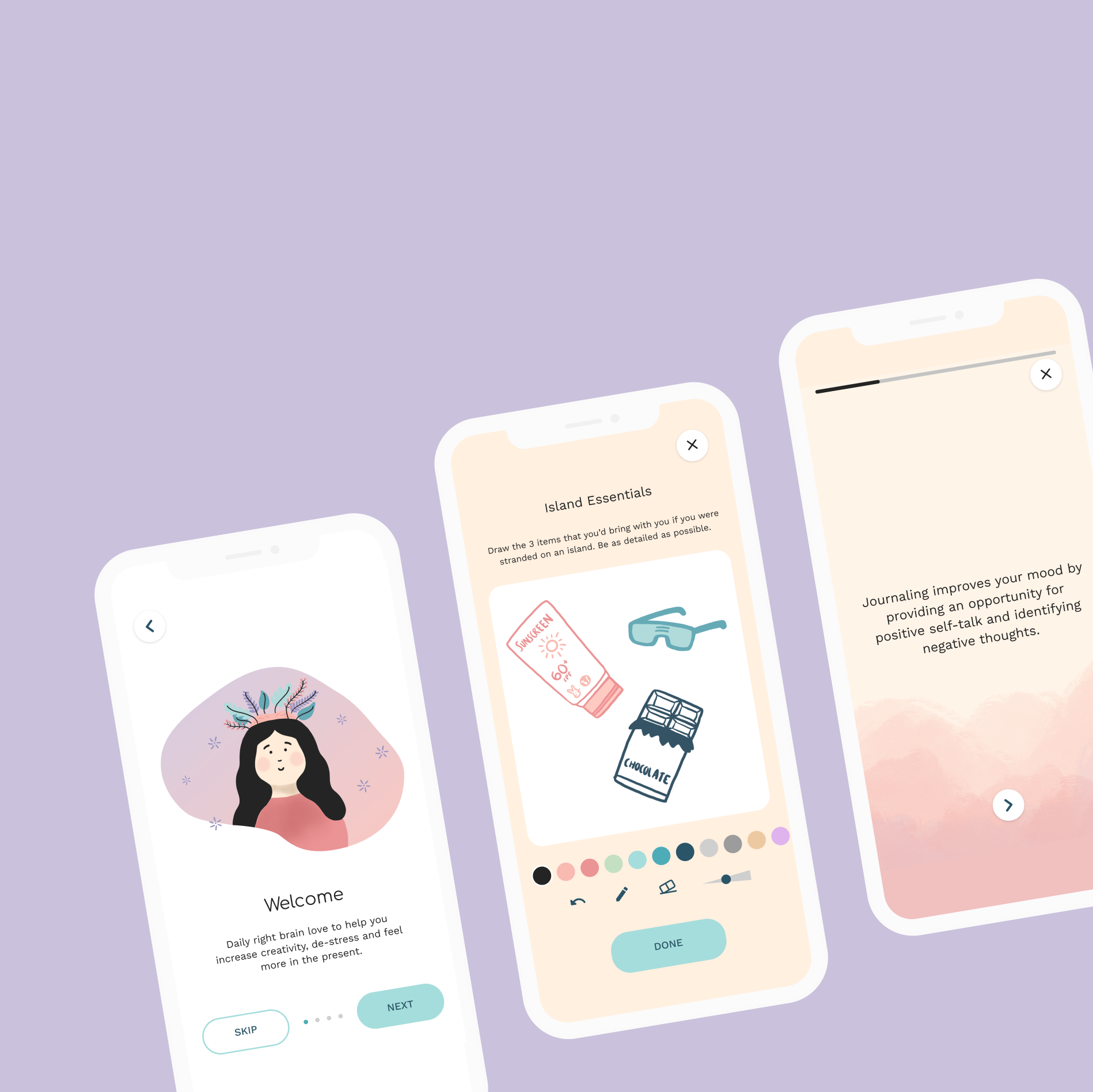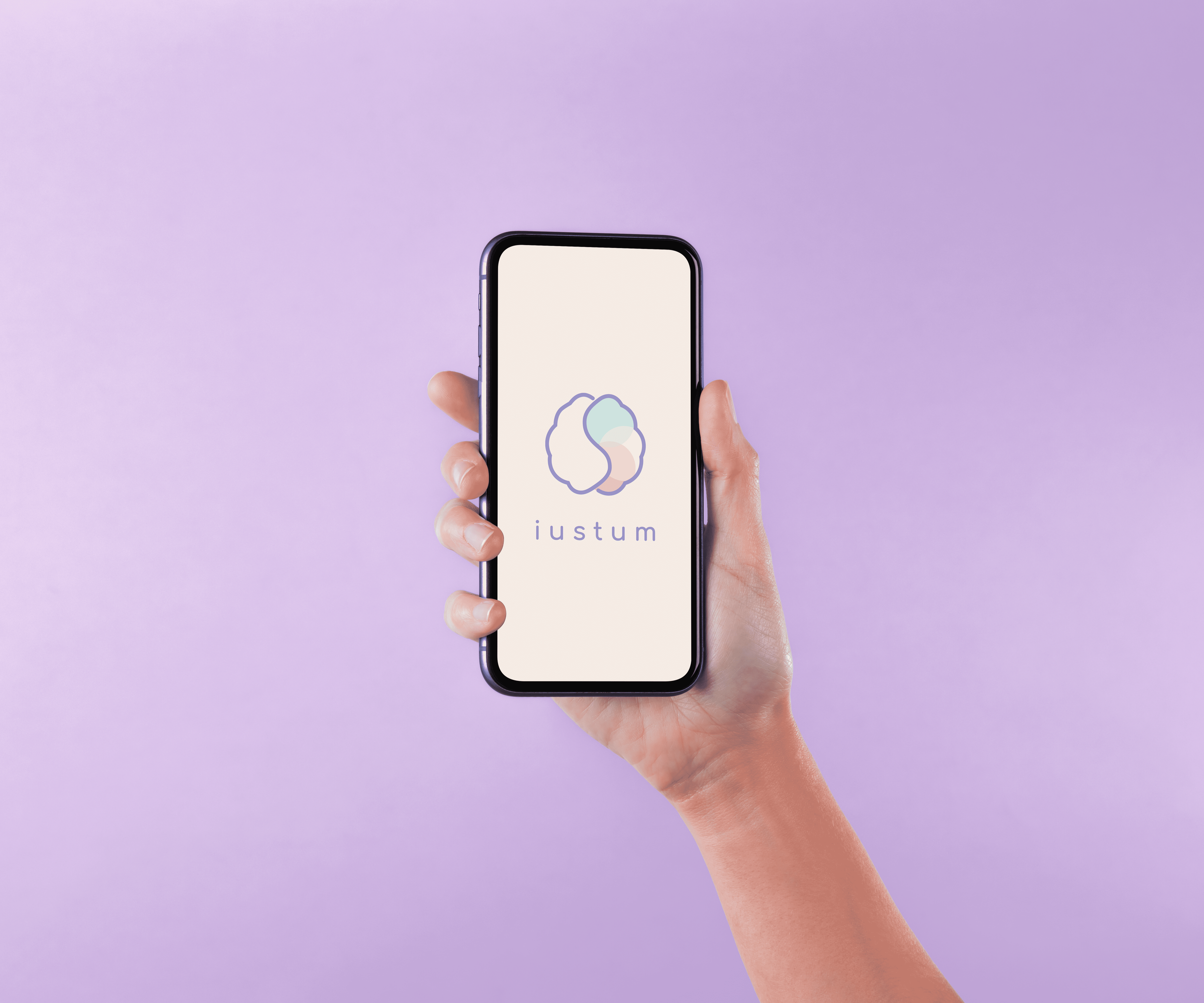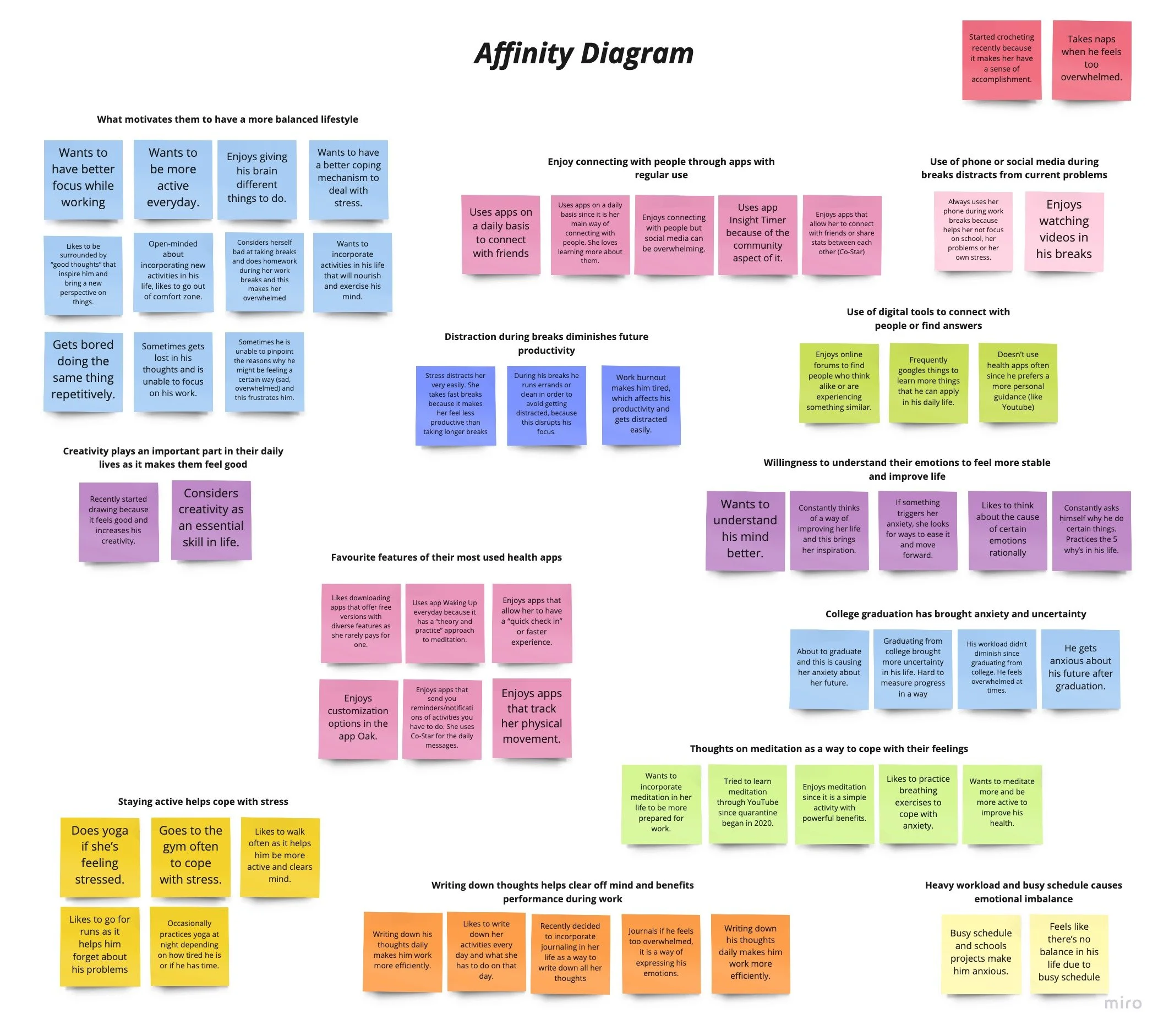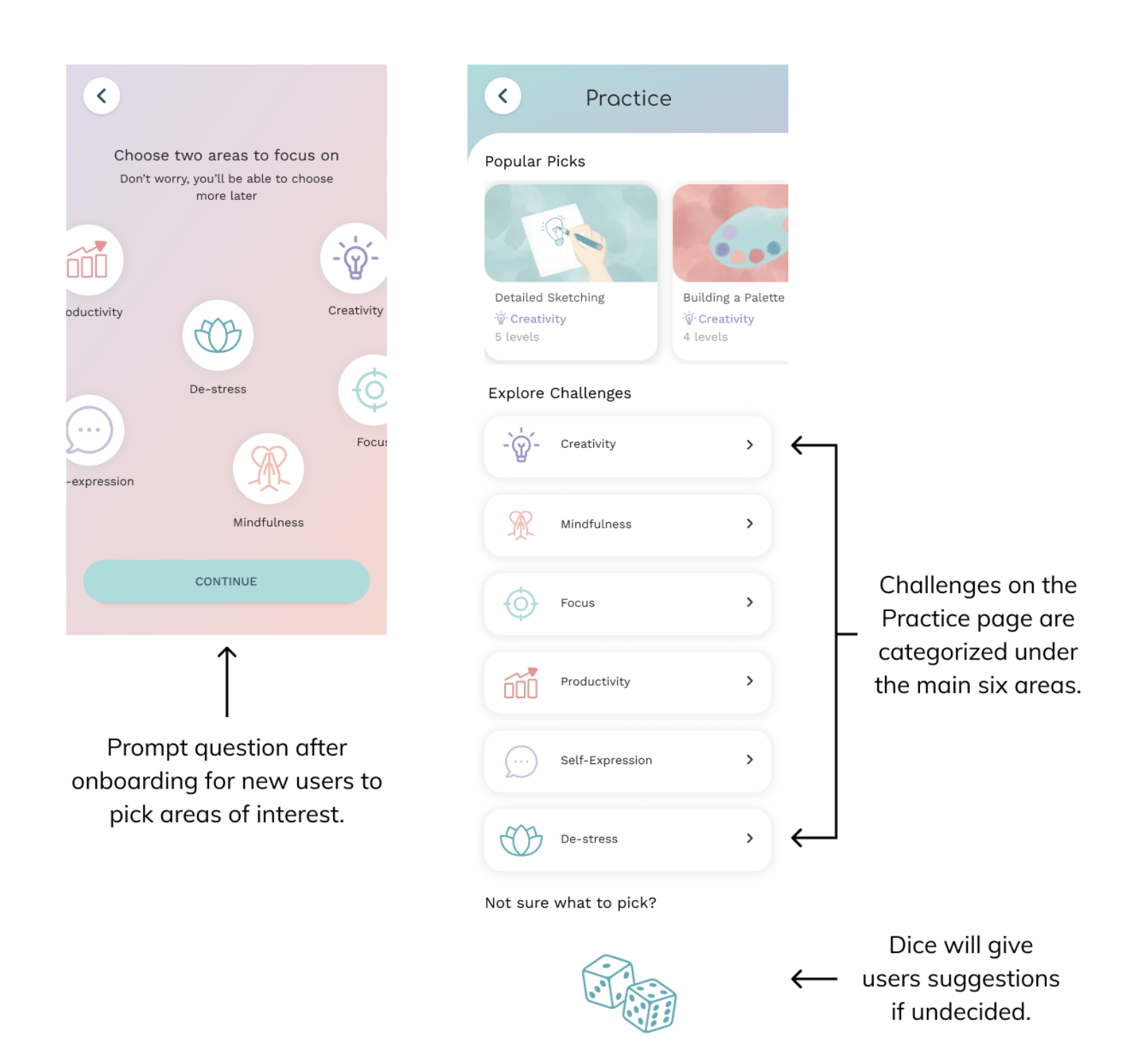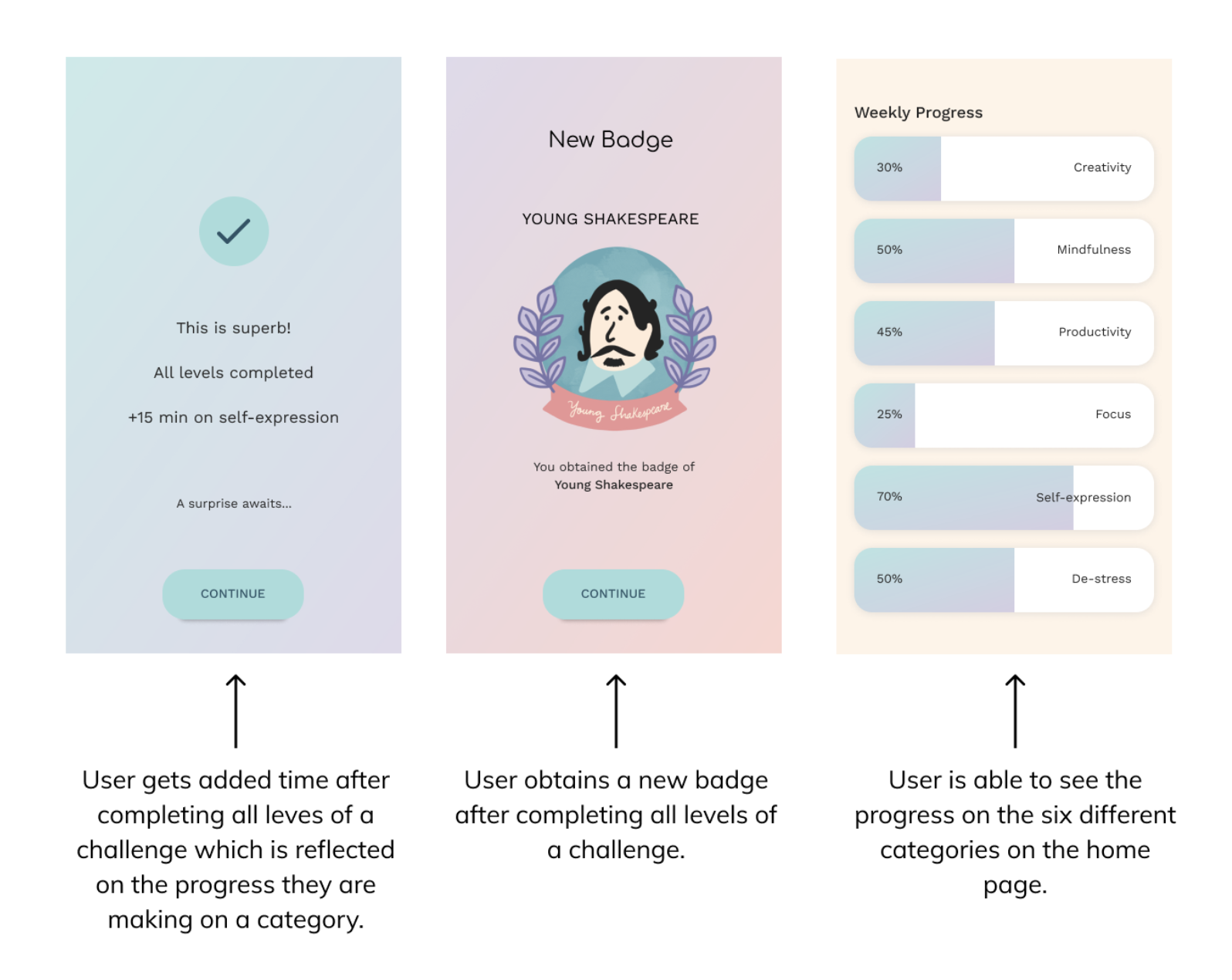Iustum
Iustum began as my graduate thesis project at Vancouver Film School, where I was challenged to design a solution to a real problem in my own life. Reflecting on my university experience, I remembered how common it was to see classmates, and myself, struggle with stress, burnout, and creative block. I wanted to create something that could bring balance back to those overwhelmed by constant performance pressure.
That intention grew into Iustum, an interactive app designed to help users reconnect with their creative side, reduce anxiety, and nurture emotional wellness through right-brain activities.
Project Details
Year: March - July 2021
Skills: UX, UI, visual, and web design
Iustum is a digital platform that helps users lower stress and boost creativity by engaging the right hemisphere of the brain, the part associated with imagination, intuition, and play. Through short exercises, mindful prompts, and creative challenges, the app encourages users to take small daily breaks that strengthen focus and emotional balance.
The project was designed with a focus on college students, aiming to address the effects of stress and overwork on mental health by offering a simple, playful way to recharge and reset.
The brief
Iustum grew from my passion for mental health and my curiosity about how design can support emotional wellbeing. Created as my final UX/UI project for the Digital Design program at Vancouver Film School, it explored how creativity and mindfulness can work together to ease stress and restore balance.
The project was recognized by the school and nominated in three VFS Award categories:
Best UX Design
Best Interactive Design
Best Graduate Project
The impact
As the UX, UI, Brand Development, and Motion Designer, I was responsible for all areas of delivery throughout this project. My main focus was crafting a seamless user experience and interface while building the visual identity from the ground up.
Along the way, I also created motion assets, conducted user testing, and handled quality assurance to ensure every interaction and visual element felt cohesive and intentional.
Wearing many hats…
Understanding the problem
During the initial research phase, I uncovered several key insights that helped define my target users and shape the focus of the project. Through interviews and secondary research, I began to notice recurring patterns among college students and young professionals, most notably around stress, creativity, and emotional wellbeing.
The main challenges that emerged were:
Anxiety and stress take a significant emotional toll on students and young professionals.
There is a general lack of awareness around how we can optimize our brain’s potential to support mental and physical wellness.
Society tends to prioritize left-brain thinking through logic, analysis, and structure, while undervaluing the creative and intuitive power of the right hemisphere.
This revealed a larger societal gap: we aren’t taught how to nurture both sides of the brain in balance. To have a healthy mind, we must first understand how it works, and how to care for it intentionally.
One quote that deeply guided my concept came from Albert Einstein:
“The intuitive mind is a sacred gift, and the rational mind is a faithful servant. We have created a society that honors the servant and has forgotten the gift.”
This idea became the foundation of Iustum: a platform designed to help users reconnect with their intuitive, creative mind and bring harmony back into their everyday lives.
The main goal behind Iustum was to create a space that nurtures the right side of the brain by helping users reconnect with creativity and intuition as tools for wellness.
Defining the goals
To bring Iustum to life, I set two key goals to guide the project:
Apply UX principles to understand the pain points, motivations, and needs of college students and recent graduates experiencing stress and anxiety from heavy workloads and fast-paced schedules.
Design an interactive experience that eases these challenges through creativity and helps users boost their mental wellness by engaging their right brain in simple, mindful ways.
My approach
I knew from the start that this project would be deeply rooted in research. To stay grounded in a user-centered mindset, I used the Double Diamond framework, beginning with discovery and definition, then moving into development and delivery.
This process gave me the freedom to explore creative solutions while ensuring every decision was guided by real user needs. I also created a short overview video that captures my design journey from start to finish, enjoy!
Key findings
I conducted five user interviews, each lasting around 25 minutes. Two participants were recent graduates, while the remaining three were still attending university. All expressed a strong interest in improving their mental health and finding ways to manage stress more effectively.
From these conversations, several key insights emerged:
Distractions during breaks often reduced productivity later in the day for three of the participants.
All users were eager to better understand their emotions in order to feel more balanced and improve their overall wellbeing.
Physical activity was a common coping mechanism for managing stress among all participants.
These insights helped me better understand the behaviors and motivations of my target users and informed the direction for Iustum’s design.
Features & MVP
Building on the insights gathered from my user interviews, I developed a mental model to identify the key focus areas for my design solution. This framework helped shape the foundation for my low-fidelity wireframes and guided which features would become part of the MVP.
The most important features that emerged from my research included:
Understanding current behaviors and stress factors: helping users reflect on their habits and emotional patterns.
Tracking progress: allowing users to visualize their growth over time.
Community support: creating a space where users can share experiences and encouragement.
Rewards for consistency: motivating users to build sustainable habits through positive reinforcement.
These features became the building blocks of Iustum, ensuring the design stayed aligned with real user needs and motivations.
User testing
User testing played a key role in validating my design decisions and refining the experience. Most of the feedback centered on the Home screen, which several users found slightly confusing. Interestingly, this confirmed that my initial assumption about overcrowding the Explore page was incorrect as users actually found that page intuitive and informative.
One major point of feedback involved the brain illustration that displayed user progress across the Practice and Theory sections. Testers mentioned they weren’t sure what the stats represented. To solve this, I added short descriptive sentences within each hemisphere, giving users clearer context about their progress.
For the high-fidelity prototype, I combined Iustum’s branding with the UX/UI structure. The color palette and illustrations were chosen to reflect the brand’s tone: friendly, calm, engaging, and educational. The prototype was designed in Figma, interactions animated in After Effects, and all illustrations created in Procreate and Adobe Illustrator.
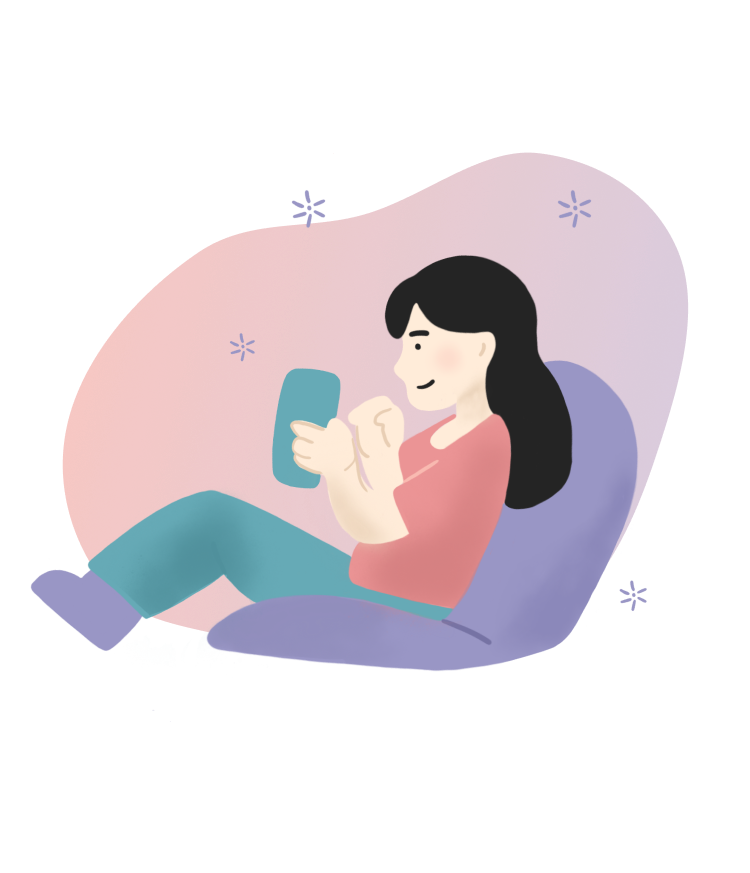
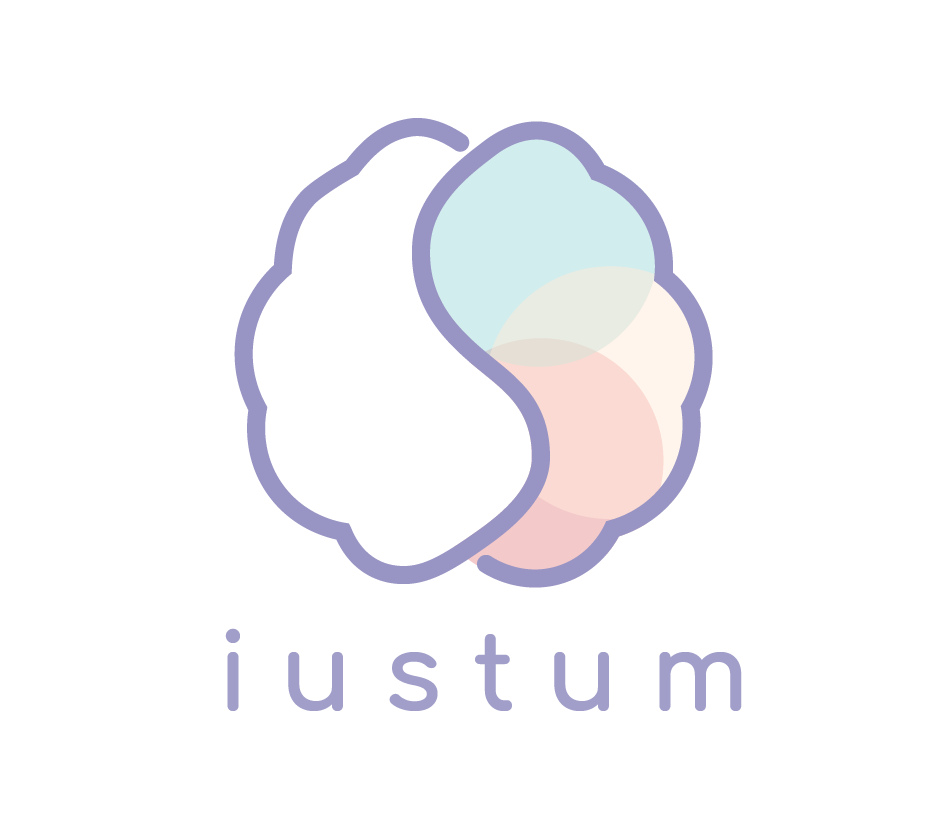
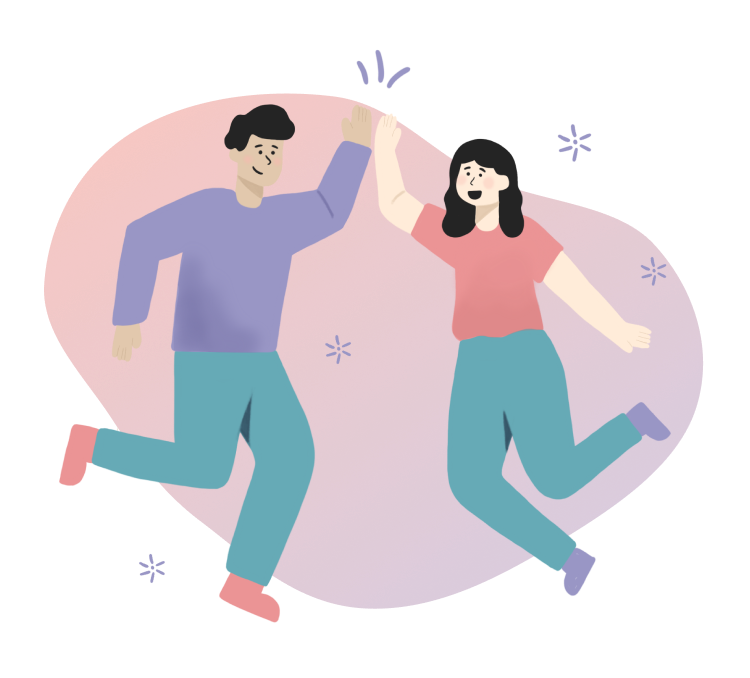
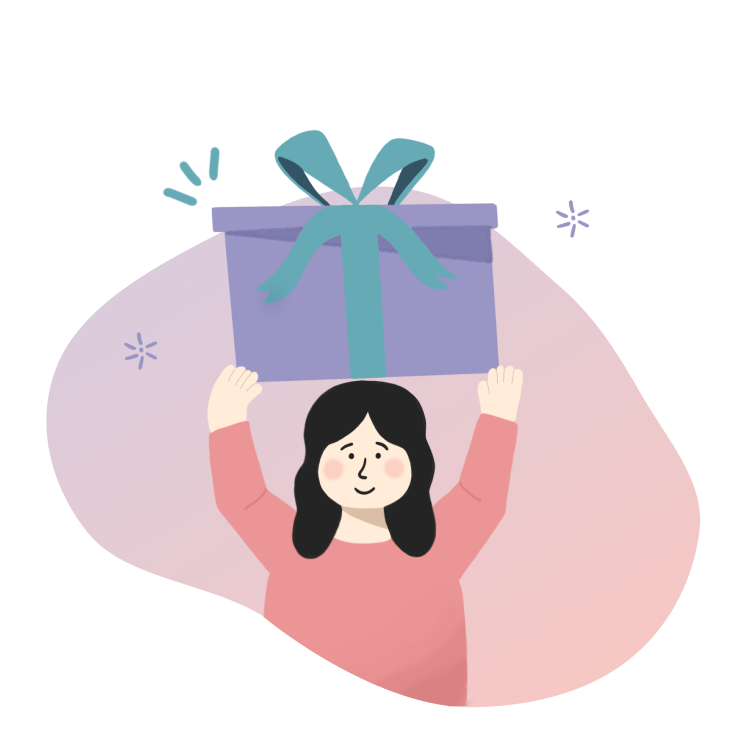

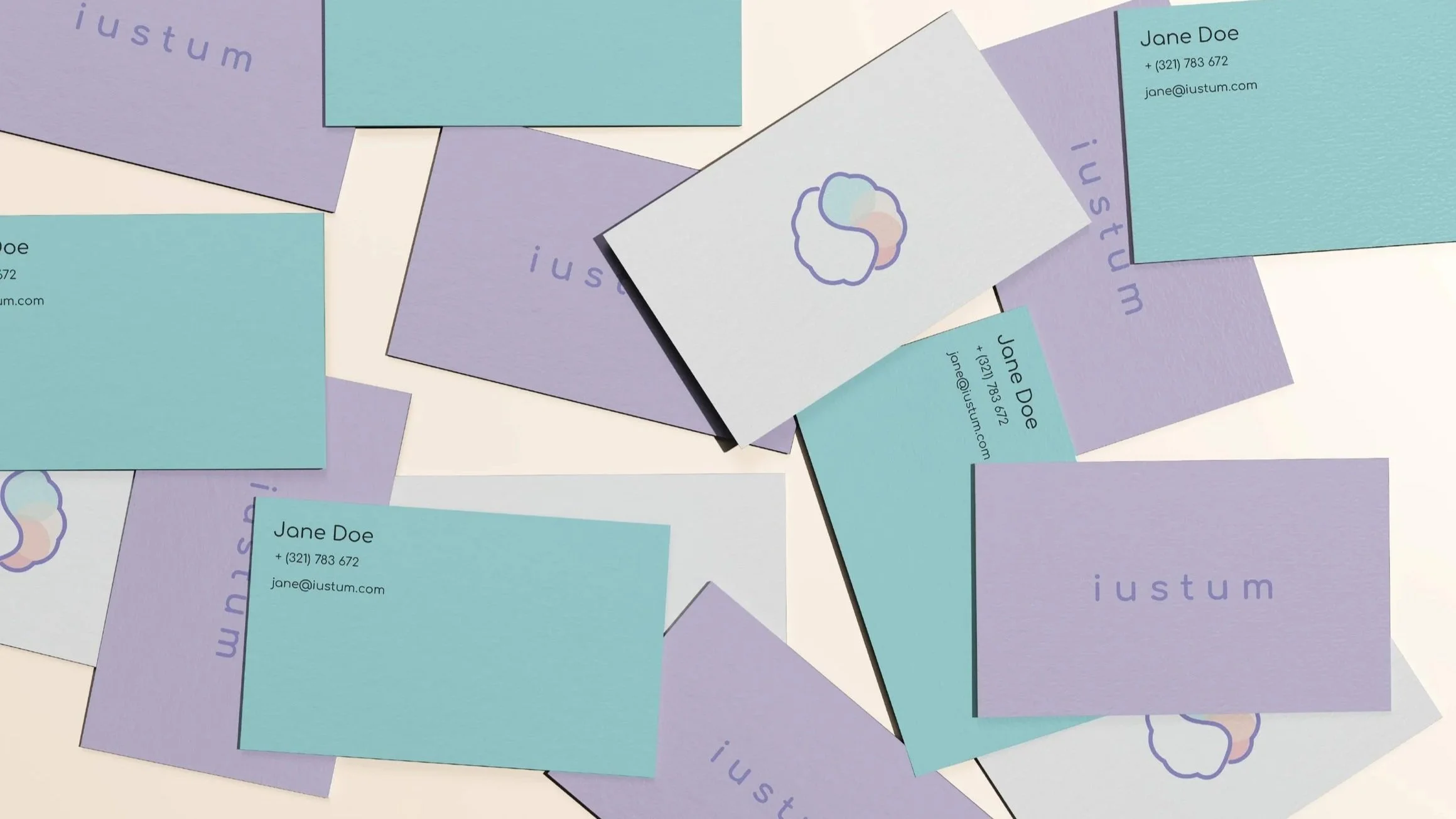
Exercising the right hemisphere
To ensure that Iustum truly supported right-brain activity, I began by researching the types of exercises scientifically linked to activating the creative side of the brain and the benefits they bring to mental wellness.
Based on this research, I designed the app’s challenges around six core right-hemisphere activities that help users nurture creativity and balance:
Creativity: sparking imagination through open-ended tasks and play
Productivity: channeling focus into purposeful, enjoyable actions
Self-expression: encouraging users to explore their emotions through art and reflection
Focus: training presence and attention in small, mindful moments
Mindfulness: cultivating awareness and calm through guided exercises
De-stress: helping users unwind and release tension through relaxation techniques
Encouraging regular use
To help users stay engaged and motivated, I focused on creating a system that rewarded consistency and celebrated progress.
From my interviews, I learned how important positive reinforcement is in building long-term habits. Based on this insight, I designed a reward system where users earn badges as they complete different challenge levels. These badges can be collected and shared with friends to showcase progress and achievements.
The Home page also features a progress dashboard, allowing users to view personalized statistics across the six core areas (or the ones they choose to focus on). This transparency helps users visualize their growth over time, encouraging them to return and continue their creative wellness journey.
Keeping users engaged
To keep the experience fresh and engaging, Iustum was designed to balance practice with learning. Alongside the creative challenges, the Theory section provides users with bite-sized insights about the benefits of exercising the right hemisphere and helps them stay curious and informed while building consistent habits.
To make the journey more social and motivating, users can invite friends to join challenges, fostering a sense of community and accountability. They can also connect through the social feed by liking and commenting on posts, creating a friendly space where encouragement and creativity thrive.
Takeaways
-
This project helped me strengthen my skills across every stage of the design process, from building a brand from scratch to delivering an interactive prototype supported by solid reasoning, in-depth research, and a lot of heart.
Through Iustum, I learned how important it is to stay connected to the user at every step. Understanding their needs and motivations guided every decision and ultimately shaped a design that felt meaningful, intentional, and truly user-focused.
-
I also learned how essential accessibility and inclusivity are in creating meaningful design. I aimed to make Iustum accessible by giving users control over their own experience, ensuring the flow felt smooth and intuitive for everyone.
I paid special attention to the colour palette, maintaining proper contrast ratios and meeting AA accessibility standards, so the design would remain both visually engaging and inclusive.

